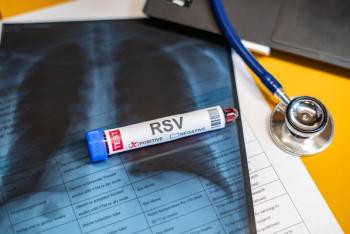
Overcoming Barriers to Eye Examinations Among Patients with Diabetes
Drs Peter Salgo, John Kitchens, Steven Peskin, and Rishi Singh further highlight the barriers that affect routine eye screening for patients with diabetes and discuss strategies that are being implemented by health plans to track and monitor patients so they can receive better care by providers.
Transcript
Peter Salgo, MD: Let’s say that every physician is perfect. Say we are, and we recommend eye exams for everybody, especially the diabetics. What are the barriers out there for patients who really want exams? What are the barriers to getting them?
John W. Kitchens, MD: Well, insurance and cost is a big barrier. I think that’s probably the number one barrier. And transportation difficulties for those patients. Those are probably two of the biggest things outside of understanding how the disease affects their eyes that prohibits them from getting their dilated eye examination.
Rishi P. Singh, MD: To add to that, I think the confusion lies around who eye care providers are and whether this is covered by their medical insurance or by their vision plans. Because, I think in the Affordable Care era that we’re in right now, people are looking at deductibles and not understanding, necessarily, where this falls in their deductible range.
These are all medical related examinations that are covered by insurance. They’re not the glasses check, the thing that’s done, and there’s a fee for that. There’s a very different fee that’s applied to this sort of thing.
Peter Salgo, MD: This should be knowable, right? You should be able to say to somebody, “Is this exam covered by my glasses plan?” “By my ophthalmologist plan?” “My optometrist plan?” “Can it be covered by X, Y, or Z?”
So, in order to simplify this, is there something health plans can do?
Steven Peskin, MD, MBA, FACP: We are looking to make it less obtuse, less complicated. So, certainly reminders for patients, for example, who need retina exams is something we do. Also, taking away the patient cost burden for those individuals at the lower ends of the socioeconomic stratus.
Peter Salgo, MD: Let me interrupt you. Does that mean you’re going to get rid of the copay for the lower socioeconomic patients?
Steven Peskin, MD, MBA, FACP: Right. In our plans, government programs, Medicaid, there would be no patient cost share or patient cost burden. Now, in most commercially insured, as I think the four of us probably are, there would be some copay but those copays would typically be fairly modest.
Peter Salgo, MD: And if we’re doing this, and if we’re trying to make an impact, I think the least we can do is track it, right? And to monitor whether we’re gaining ground on this.
Steven Peskin, MD, MBA, FACP: Sure.
Peter Salgo, MD: So, how do we track this stuff at the health plan level, first of all?
Steven Peskin, MD, MBA, FACP: So we do a lot of longitudinal tracking, more and more. We exchange data with our clinical partners, whether it be a health system under an accountable care organization or a primary care patient-centered medical home.
We’re making that information available. Most physicians think they’re doing 80%, 90%, to 100% on lots of measures like, “My hemoglobin A1c for all of my patients is less than 8.” Well, no, guess what? A lot of them have a hemoglobin A1c greater than 8. That can be a bit humbling.
So, making that information available, not in a punitive way, but in a collaborative way, is a big part of what we do.
Peter Salgo, MD: Well, you can do that because you’ve got big block data. You’ve got all-comers. People are submitting charts to you for analysis. But what about at the provider level? Can providers track their own patients?
Rishi P. Singh, MD: At the Cleveland Clinic, we have a very concise and small healthcare model. But the nice part about this is it interacts with each other. So, for example, if the patient shows up to me as the ophthalmologist, it automatically acknowledges that they had a dilated eye exam with the provider they’re seeing.
So the provider records look good because they have had that eye exam with us. And we have this across the board in different specialties where we know if they went to the podiatrist and they had a certain test ordered that would fulfill their diabetic foot examination. If they had their A1c value drawn it automatically fulfills that as well. And that’s part of our electronic system.
John W. Kitchens, MD: Out in private practice where we see a variety of different hospital systems and insurances, it’s much more difficult to monitor and control these patients.
Steven Peskin, MD, MBA, FACP: Sure.
Peter Salgo, MD: The 50% who aren’t getting followed.
John W. Kitchens, MD: But what’s helping is actually insurance companies. So the Healthcare Effectiveness Data and Information Set and quality metrics are going to start reinforcing to physicians, positively or negatively, whether or not their patients are getting screened
Peter Salgo, MD: Did I just feel the earth stop rotating on its axis? There’s a clinician who spoke highly of an insurance company.
John W. Kitchens, MD: They know their data.
Peter Salgo, MD: They sure do.
John W. Kitchens, MD: They know your data, so you’ve got to be good with it.
Steven Peskin, MD, MBA, FACP: We have the claims data, sevens ways to Sunday. That said, we don’t have a lot of the data that is obtainable through the electronic health record. We’re working on that. We’re doing that health information exchange, that’s a term that’s probably familiar to everyone on this panel.
So do we have a long way to go with that? Absolutely. We are making ground on that we’re harmonizing information from someone like the Cleveland Clinic or your private practice with our claim data. And that’s a far more powerful data set to then provide back to our clinical partners so that they can do better, which all physicians want to.
I fundamentally believe, even though I’m the insurance guy on the panel, that all physicians want to provide excellent care, not just good care, but excellent care to their patients.
Newsletter
Stay ahead of policy, cost, and value—subscribe to AJMC for expert insights at the intersection of clinical care and health economics.












































